A Love Fest in Dresden and Berlin
Oxytocin levels soar at the Dresden Music Festival and the Carnival of Cultures
“Thank you for the quality of your smiles,” the French mezzo soprano Lea Desandre said in English to the beaming German audience during a performance of love songs with the lutenist Thomas Dunford at the Dresden Festival of Music.
Since the motto of this year’s festival was “love,” organizers partnered with the Technical University of Dresden to assess listeners’ oxytocin levels after a concert at the Dresden Center of Regenerative Therapies, part of the Sound & Science series.
I wasn’t at that performance on May 27th, but it seems that listeners enjoyed it. After a string trio played a program including an arrangement of movements from Bach’s Goldberg Variations, scientists measured audience members’ oxytocin levels. It’s well documented that listening to and making music has a positive impact on the brain, helping to ease anxiety and depression and boost the immune system. The festival’s experiment, according to a press release, demonstrated that “music is better than sex” and that “levels of the love hormone oxytocin rise higher during a concert experience than during physical intimacy.”
Audience members’ levels of oxytocin rose to an average of 203.17 pg/ml from 37.54 pg/ml. (The musicians’ levels rose less, by an average of 88.49 pg/ml. Make of that what you will).
There were no scientists on hand at Desandre and Dunford’s concert on June 11th at the baroque Palais im Großen Garten (Great Garden Palace), located in a huge park with botanical gardens and a lake. But I was definitely on a musically-induced high after listening to the duo perform songs by Honoré d’Ambruys, Marc-Antoine Charpentier, André Messager, Sébastian Le Camus and Françoise Hardy, the French singer-songwriter who died last year.
Desandre, who has a beautiful, expressive voice and is a regular at the Paris Opera, performs frequently with Dunford. This program featured music included on their recent album Idylle, with songs spanning centuries and moods from lighthearted to melancholy. The songs were interspersed with Dunford’s elegant arrangements of works by Satie.
The venue wasn’t too shabby either.
Festival director Jan Vogler chose the theme of love for the 2025 festival “as a response to hatred, violence and indifference,” which have all become tragically worse since the festival theme was decided 18 months ago. Vogler also wanted to highlight the 20th anniversary of the rebuilding of the Frauenkirche, the Lutheran church destroyed when the allies firebombed Dresden at the end of WWII.
The festival, which ran May 17 - June 14, included orchestral concerts by the Vienna Philharmonic and the Chicago Symphony Orchestra, world music performers, jazz, and a concert performance of Siegfried, part of Kent Nagano’s multi-year Wagner Cycles project, which features Concerto Köln and the Dresden Festival Orchestra performing Wagner on period instruments. It was fascinating to learn more about this approach.
In addition to listening to the Siegfried, I was also happy to hear (and see!) the Geneva Camerata’s Revolta, a unique take on Shostakovich Symphony No. 5 choreographed to Krump, a style of dance originating in L.A. (More to follow soon about Wagner, Dresden and the festival for The American Scholar, Classical Voice North America, and, bien sûr, this newsletter!)
And speaking of smiles, it was an absolute smile-fest at the euphoric Carnival of Cultures parade in Berlin on June 8th. Founded in 1996 as a response to a resurgence of right-wing nationalism in Germany, the annual Carnival is a four day festival featuring music, food and dance that culminates in a parade featuring some 70 groups representing an array of nationalities and traditions. The parade usually takes place in the Kreuzberg area, but this year took place in the Friedrichshain neighborhood, a formerly working class area of East Berlin now full of hipster cafes.
The atmosphere was electric. Bystanders and parade participants danced. And as afternoon became evening (and the piles of empty beer bottles grew larger), it wasn’t always clear who was a bystander and who was officially taking part in the parade. It was just one joyous, loving, oxytocin driven celebration of humanity in all its diversity. Now that’s MY kind of parade.
All photos in this article are my own.

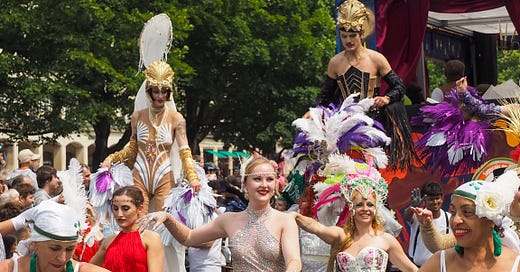




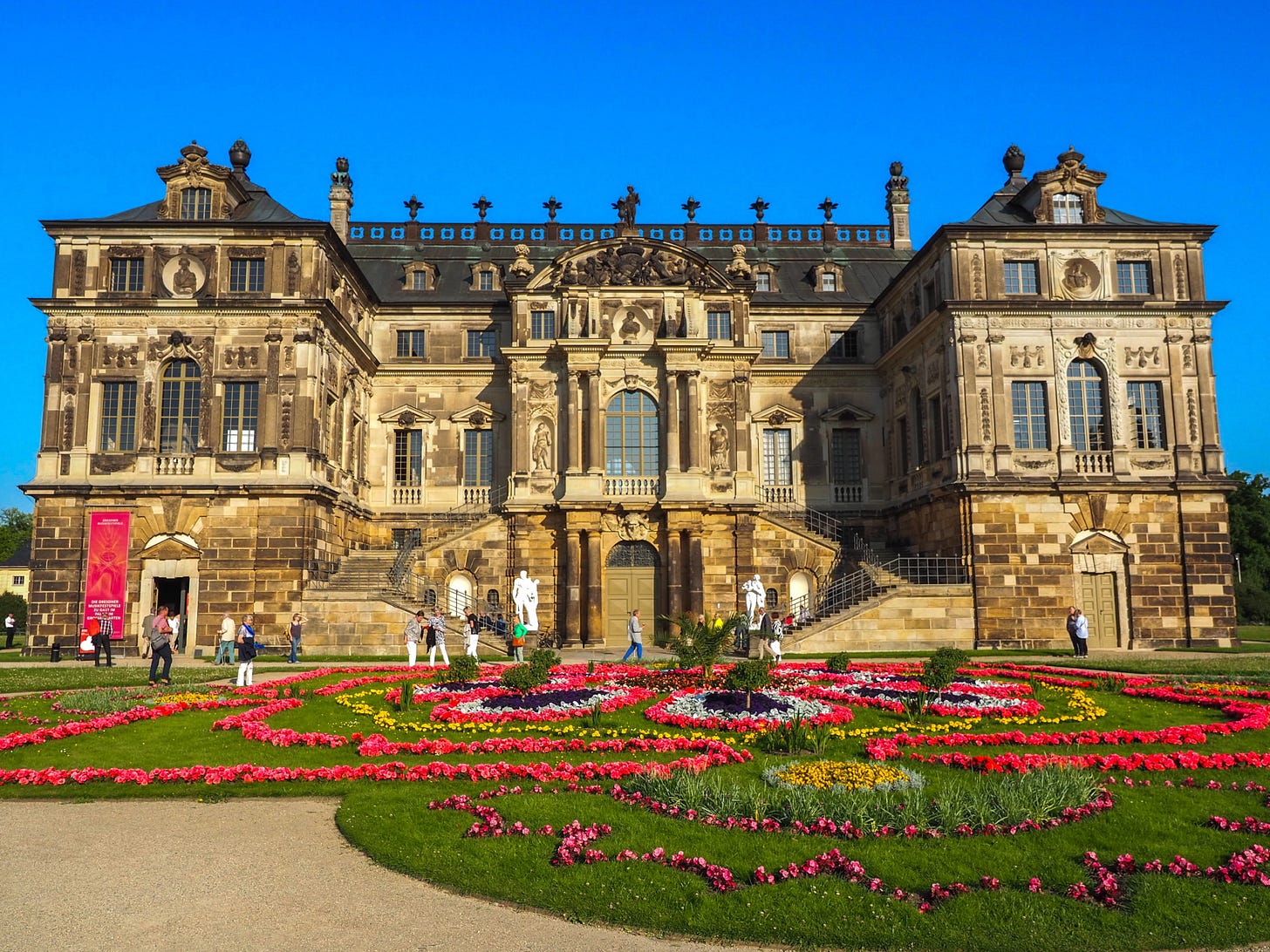
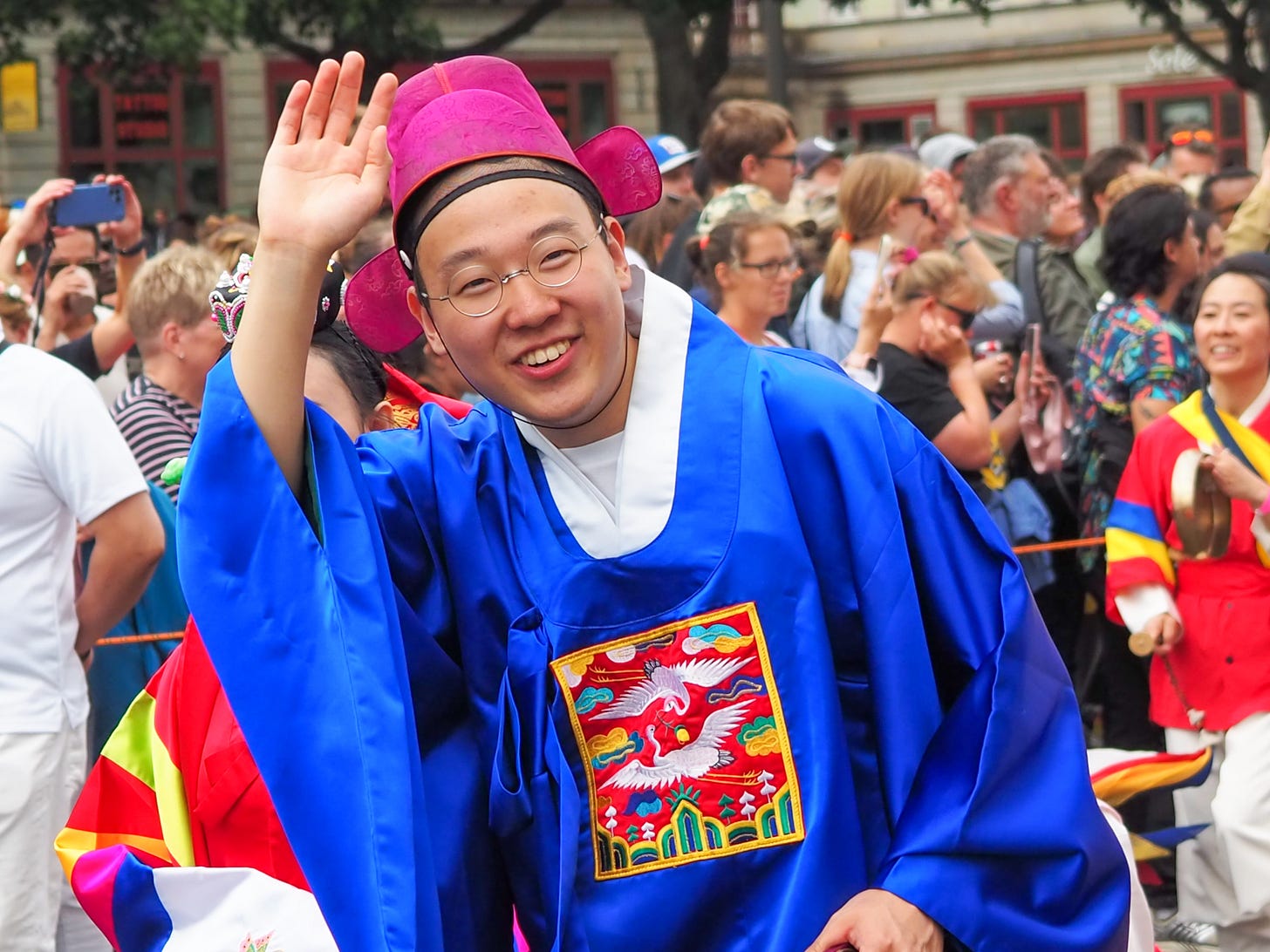
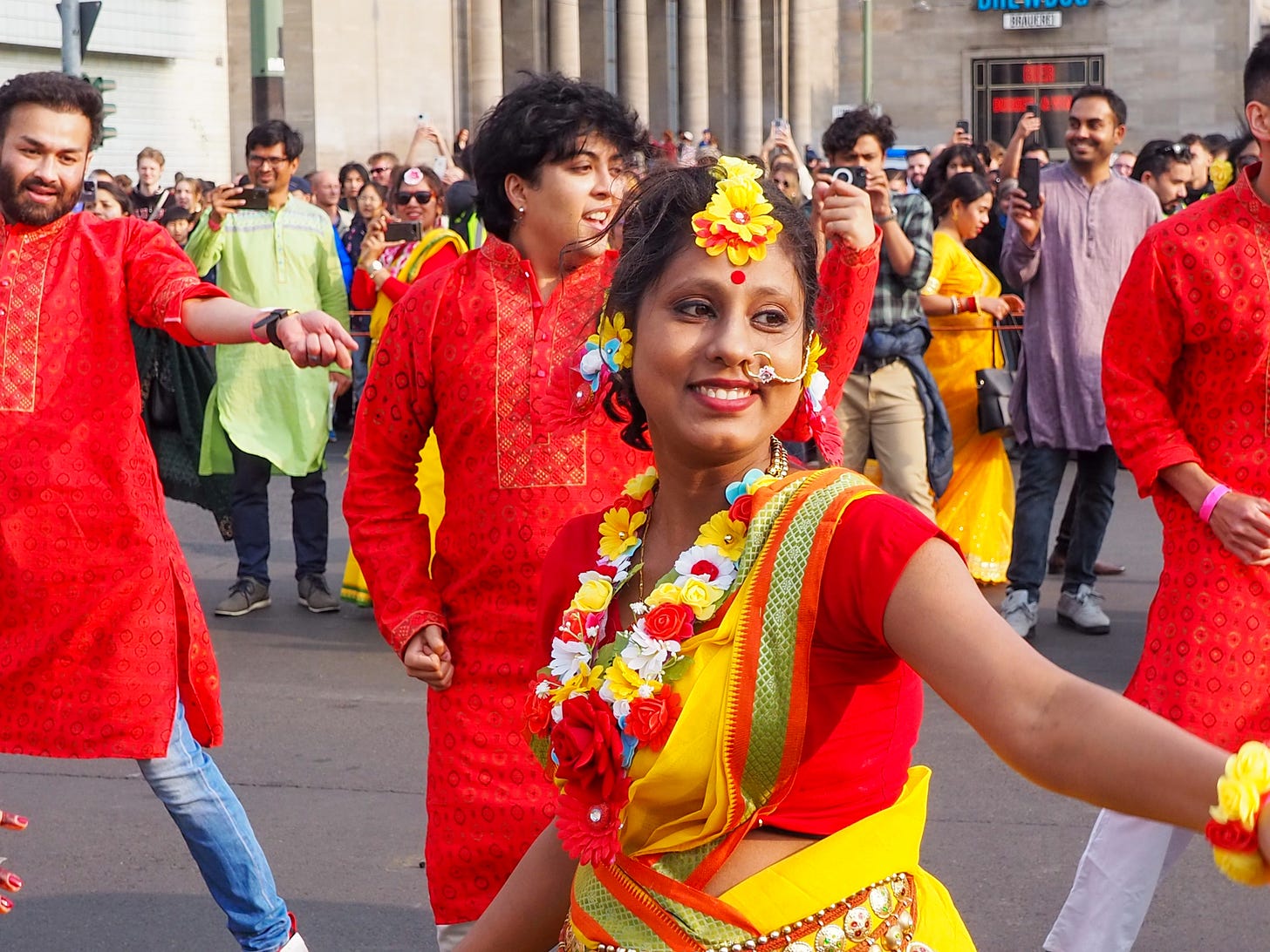

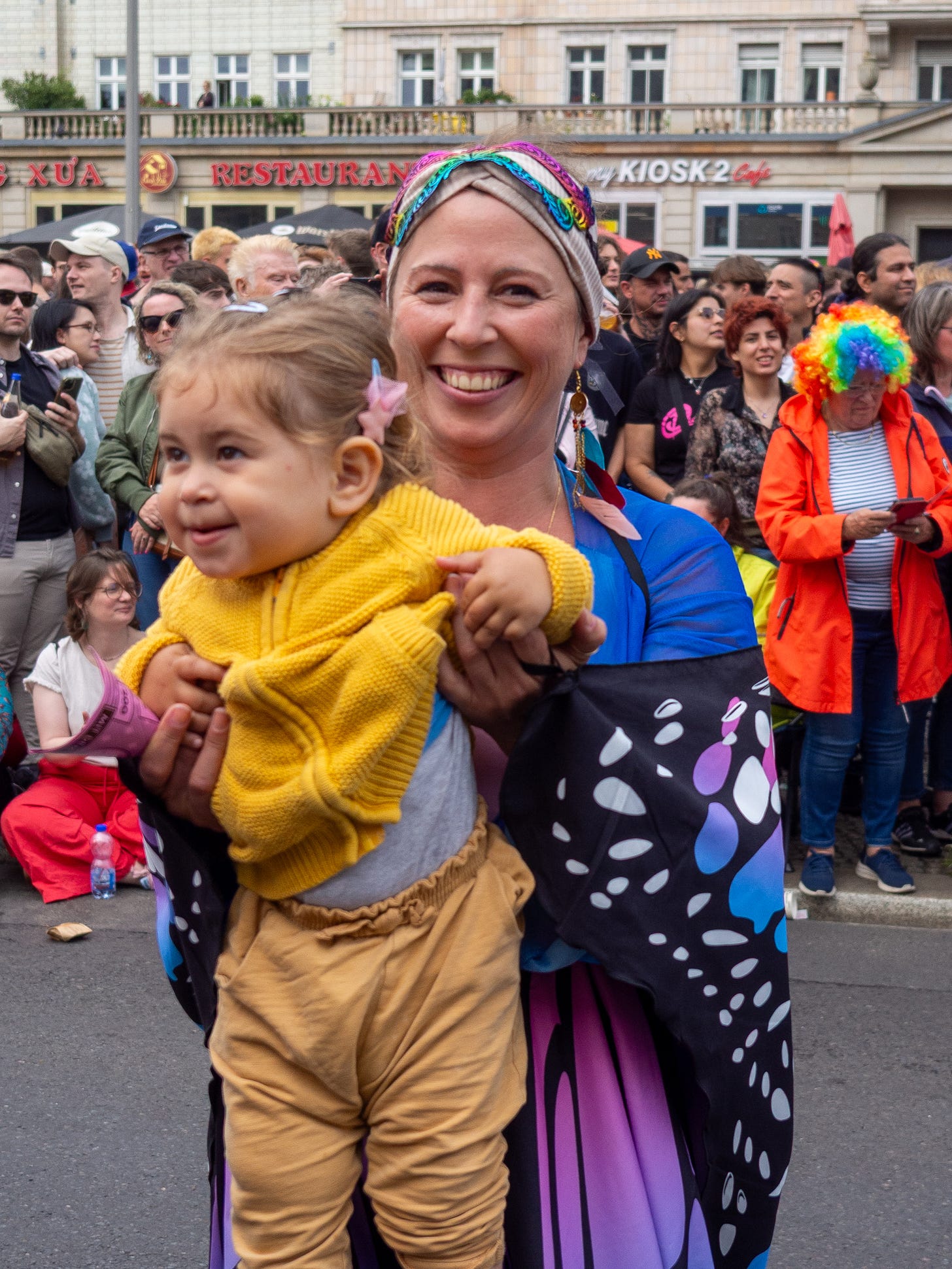
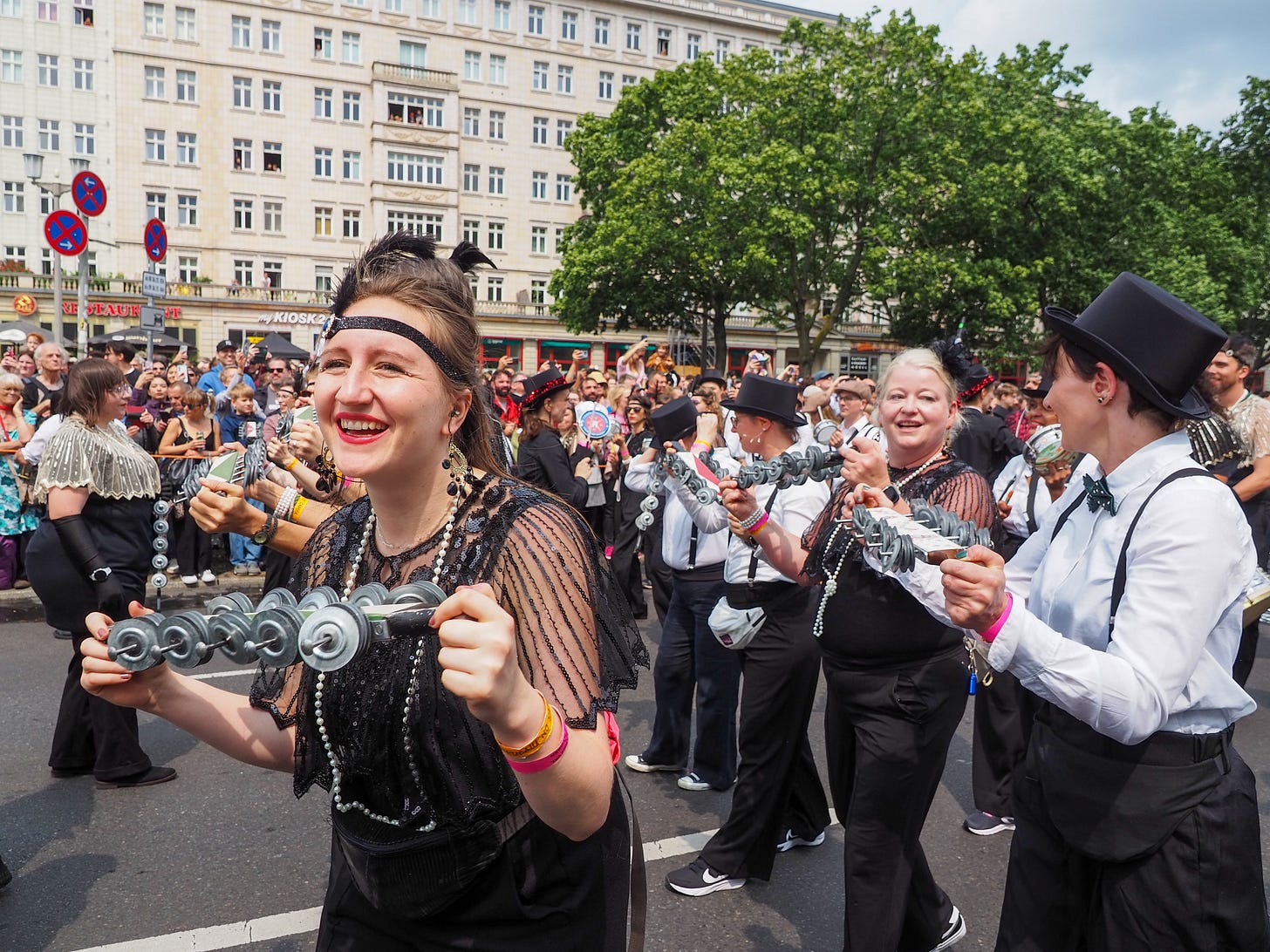
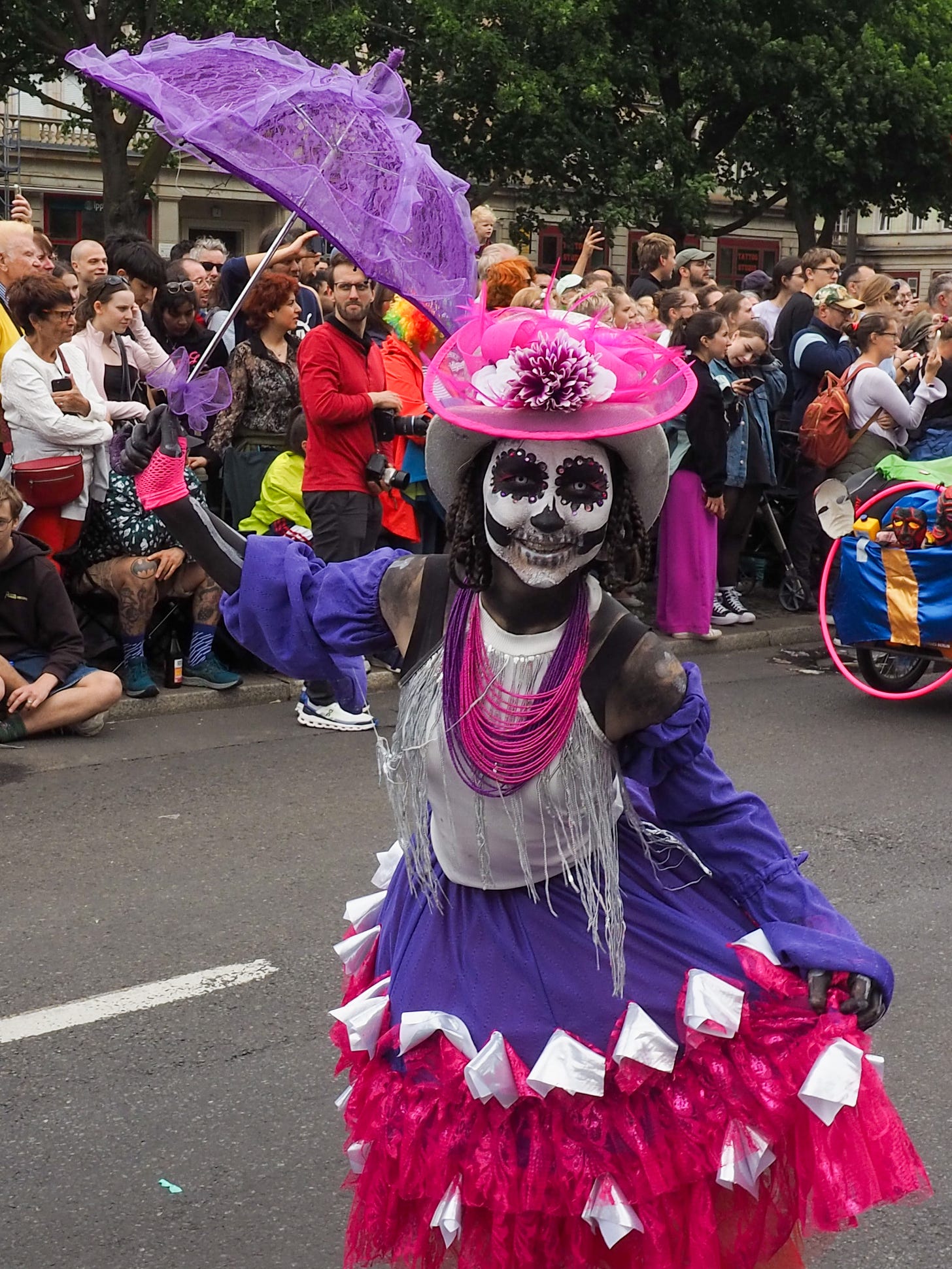
How amazing that audience members’ levels of oxytocin rose to an average of 203.17 pg/ml from 37.54 pg/ml! Adding these to my play list!
Enjoyed reading about the festival. Photos are excellent. Great job.